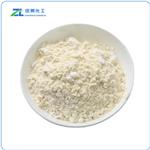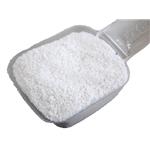The performance of heparin sodium
Feb 24,2022
The research origin of heparin sodium
In 1916, medical student Jay McLean, under the guidance of Professor Howell, conducted research on procoagulant substances in vivo. In his research, he found that a liver extract not only does not promote coagulation but also prevents blood coagulation, and then repeated experiments to prove that there is indeed an anticoagulant in this liver extract. Since this substance was extracted from animal livers at that time, it was named heparin. After more than 20 years of research, researchers found that heparin is also contained in bovine lung and pig small intestine. This discovery saved the production cost of heparin. Since then, heparin sodium salt has become the international standard for heparin production. In 1940, the United States officially listed heparin sodium in the US Pharmacopoeia, and heparin drugs were used in clinical treatment.
Properties of heparin sodium
At present, heparin is mainly obtained from the small intestinal mucosa of pigs. It is a biochemical drug and cannot be synthesized artificially. According to research statistics, based on the number of pig small intestines, an average of 2000 pig small intestines can obtain 1Kg of heparin raw materials. Heparin is a kind of aminodextran sulfate produced by mast cells in animal connective tissue. Heparin is a multicellular co-product with an extremely complex three-dimensional structure that participates in multi-step enzymatic reactions in the body. Heparin has the physical and chemical properties of strong negative charge, which can interfere with many aspects of the coagulation process, and has anticoagulant effects in vivo and in vitro.
Heparin usually exists in the form of its sodium salt, known as heparin sodium. Heparin sodium is a mixture of asymmetric molecules with different molecular weights, and is a general name for a class of glucosamine sulfate sodium salts (picture 1). The potency of heparin API is the active unit (IU) contained in each milligram (mg) of heparin API, and the range of potency required by various countries is generally 150-200 IU/mg. At present, there are mainly Heparin and Changshan pharmaceutical companies in China that produce heparin raw materials.

picture 1 Heparin sodium
Application of heparin sodium in medical field
Heparin sodium is used clinically, mainly for the treatment of cerebral infarction. After heparin sodium is hydrolyzed in the body, some components have the property of prolonging blood coagulation time, so they can be used as anticoagulant drugs. Embolism and other complications. Recently, heparin has been found to inhibit the proliferation of smooth muscle cells, anti-inflammatory, anti-tumor and anti-virus and other biological functions [1].
Application of Heparin Sodium in Cosmetics
Heparin sodium cream, with low molecular weight heparin sodium and sodium hyaluronate as the main components, heparin sodium cream has the biological activities of anti-inflammatory, anti-allergy, improving microcirculation, and softening, moisturizing the skin, promoting cell proliferation, and accelerating wound healing. effect.
In an article published in the "Chinese Journal of Dermatology and Venereology" in 2010 [2], the researchers explored the treatment of heparin sodium by slowly withdrawing the drug and gradually adding heparin sodium ointment for external application to control local inflammation and reduce local skin sensitivity. Efficacy and safety of ointment in the treatment of facial glucocorticoid-dependent dermatitis. The results show that heparin sodium ointment can improve local symptoms, promote hormone withdrawal, shorten the course of treatment, improve patients' compliance with treatment, and improve clinical efficacy.
Heparin sodium is in the 2015 edition of the "Catalogue of Cosmetic Raw Materials Used", so it can be used in cosmetics. Heparin sodium is an odorless white powder that is hygroscopic and easily soluble in water. Due to the strong negative charge in aqueous solution, it can combine with some cations to form molecular complexes. Therefore, it should be avoided to use together with cations, strong alkalis, etc. in cosmetic formulations.
Renference
1 Gao Ningguo, Cheng Xiulan, Yang Jing. Research progress on the structure and function of heparin [J]. Advances in Bioengineering, 1999, 19(5): 4-13.
2 Qian Xiaoying, Zhou Zongli, Xiong Mingdi. Observation on the efficacy of heparin sodium ointment in the treatment of facial glucocorticoid-dependent dermatitis [J]. Chinese Journal of Dermatology and Venereology, 2010, 1, 24(1): 96-97.
- Related articles
- Related Qustion
Span 80 is commonly used non-ionic surface active emulsifiers, which is widely used in emulsification, petroleum, medicine, cosmetics, textiles, paints, leather and other industries....
Feb 24,2022API2-phenylphenol, also known as 2-hydroxybiphenyl or 2-phenylphenol, is a white or light yellow or light red powder, flakes or blocks, with a faint smell.....
Feb 24,2022APIHeparin sodium
9041-08-1You may like
- Heparin sodium
-

- $6.00 / 1kg
- 2024-05-20
- CAS:9041-08-1
- Min. Order: 1kg
- Purity: More than 99%
- Supply Ability: 2000KG/Month
- Heparin Sodium
-

- $120.00 / 1kg
- 2024-05-18
- CAS:9041-08-1
- Min. Order: 1kg
- Purity: 99%
- Supply Ability: 20ton
- Heparin sodium
-

- $6.00 / 1KG
- 2024-04-29
- CAS:9041-08-1
- Min. Order: 1KG
- Purity: More than 99%
- Supply Ability: 2000KG/Month




